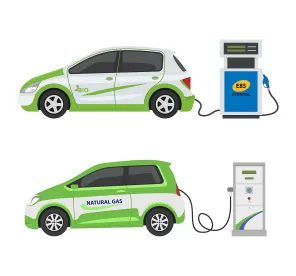On December 7, 2021, the California Air Resources Board (CARB) held a public workshop to preview potential changes to the groundbreaking California Low Carbon Fuel Standard (LCFS) program, which has served as a model for other low carbon fuel programs across the country. CARB is accepting written public comments on the concepts presented in the workshop through January 7, 2022.
By way of background, the intent of the LCFS program is to reduce, over time, the carbon intensity (CI) of transportation fuels used in California and to provide an increasing range of low-carbon and renewable fuel alternatives, to reduce petroleum dependency and to achieve climate and air quality benefits. The program aims to achieve these goals by requiring fuel producers to meet annually declining CI benchmarks for the transportation fuels they sell or import into California. Low-CI fuels below the CI benchmarks generate credits under the program, while fuels above the CI benchmark generate deficits. A deficit generator meets its compliance obligation by ensuring that the number of credits it earns or otherwise acquires from another party (i.e., through purchase) is equal to or greater than the deficits it has incurred. Historically, the potential for generating LCFS credits for low-CI fuels has provided a powerful market incentive for the development of innovative fuel projects.
CARB staff framed the concepts presented at the December 7 workshop in terms of the following “broad principles” they seek to achieve with future LCFS amendments:
-
Aligning the LCFS program with long-term statewide climate goals and further incentivizing private investment in low-carbon fuels;
-
Accelerating the transition to zero-emission vehicles in line with California Governor Newsom’s Executive Order N-79-20;
-
Supporting exportability of the LCFS program to other regions outside of California;
-
Harmonizing the LCFS program with federal policy signals;
-
Reflecting changes in technologies, data, and stakeholder feedback; and
-
Streamlining LCFS implementation.
In keeping with these broad principles, CARB staff presented a number of topics on which they are requesting input over the next month. The topics on which CARB is seeking input are outlined in the staff presentation, but some of the higher-profile topics on which CARB invites comment include:
-
Increasing Stringency of CI Benchmark Values. CARB staff previewed future efforts to establish declining CI compliance targets after 2030 (the final year for which the current regulation specifies a CI benchmark) and to potentially increase the stringency of the interim pre-2030 CI targets.
-
Expanded Incentives for Hydrogen as a Transportation Fuel. Staff presented a number of potential measures to incentivize the use of low-CI hydrogen as a transportation fuel on which CARB is seeking comment, including:
-
Allowing for book-and-claim accounting so that credits may be generated for low-CI hydrogen injected into hydrogen pipelines. According to CARB staff, this would expand LCFS crediting opportunities for low-CI hydrogen injected into regional hydrogen pipelines, aligning LCFS incentives with the development of regional hydrogen hubs to be funded under the federal infrastructure bill signed into law on November 15, 2021.
-
Developing a dedicated crediting mechanism for hydrogen refueling infrastructure (HRI) for medium- and heavy-duty vehicles.
-
Defining new energy economy ratios (EERs) for emerging zero-emission fuel-vehicle combinations, including for medium- and heavy-duty hydrogen vehicles.
-
Allowing hydrogen production facilities not co-located with a refinery to generate credits under the refinery investment provision.
-
-
Credit Phase-Out for Petroleum Projects. CARB introduced the concept of limiting and ultimately phasing out credits for “petroleum projects” in the future. While CARB staff did not identify the projects targeted for phase-out in the future, the current LCFS regulation provides pathways for project-based crediting, including innovative crude oil production and refinery investment credit projects, so these are the likely candidates.
-
Technical Changes. CARB staff noted a number of technical changes to the LCFS program that are under consideration, including:
-
Updating emission factors used in existing modeling tools, “as appropriate.”
-
Developing a new simplified Tier 1 calculator for hydrogen fuel pathways.
-
Potentially updating to a new version of the Oil Production Greenhouse Gas Emission Estimator (OPGEE) model, which CARB originally adopted in 2012 to assist regulated parties in determining CI values for crude oil used in California.
-
Potentially updating certain EERs with more recent data to more accurately determine and compare the efficiency of different types of fuels used in various power trains.
-
CARB took comments from participants during the workshops. Common themes of the comments included the following:
-
Volatility in LCFS Credit Pricing. A number of commenters noted the recent downward trend in LCFS credit pricing (from above $200 per credit to around $140 per credit) as a signal that CARB action is needed to curb pricing volatility, which can discourage investment and financing opportunities for project developers.
-
Alignment with Other CARB Regulatory Programs. A common theme was that CARB should strive to align LCFS incentives with the other mobile source emission control regulations that CARB is currently developing (g., the Advanced Clean Fleets and Commercial Harbor Craft regulations), where it seeks to require the adoption of zero-emission technology.
-
Competing Perspectives on Agricultural RNG Projects. There were a number of commenters on both sides of the issue of whether CARB should eliminate the LCFS credit pathway for agricultural renewable natural gas (RNG) projects, an issue that is the subject of a rulemaking petition currently pending before CARB.
-
Timing of Regulatory Updates. The LCFS changes were proposed in conjunction with CARB’s currently ongoing process of updating California’s Climate Scoping Plan, the state’s blueprint for achieving carbon neutrality by 2045. The Scoping Plan update process began earlier this year and is scheduled to wrap up in late 2022. Because any future LCFS amendments are expected to be issued in conjunction with this process, CARB staff estimated that the earliest they could take effect would be 2024. A number of commenters advocated that CARB accelerate this timeframe.
As far as next steps, CARB will receive comments on the concepts introduced in the December 7 workshop through January 7, 2022. CARB anticipates holding additional workshops in early 2022 to explore the workshop concepts in more depth.





 />i
/>i

